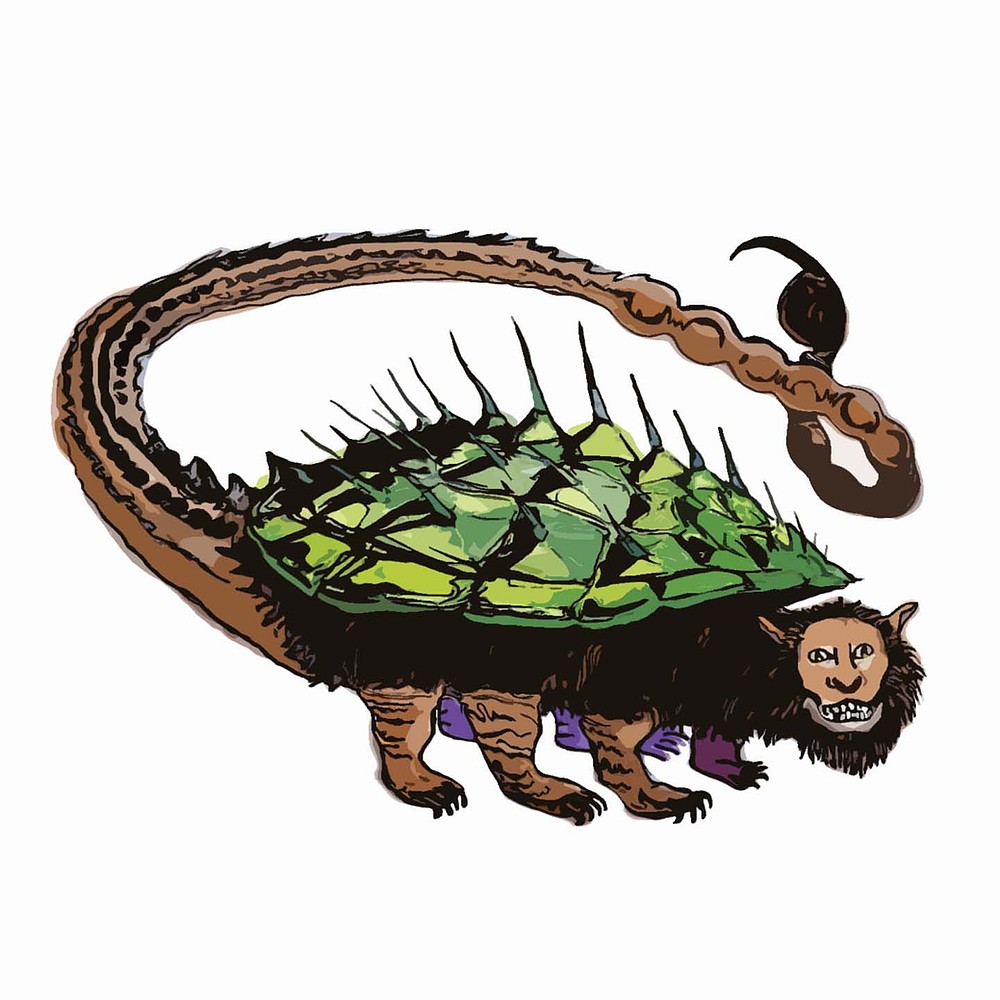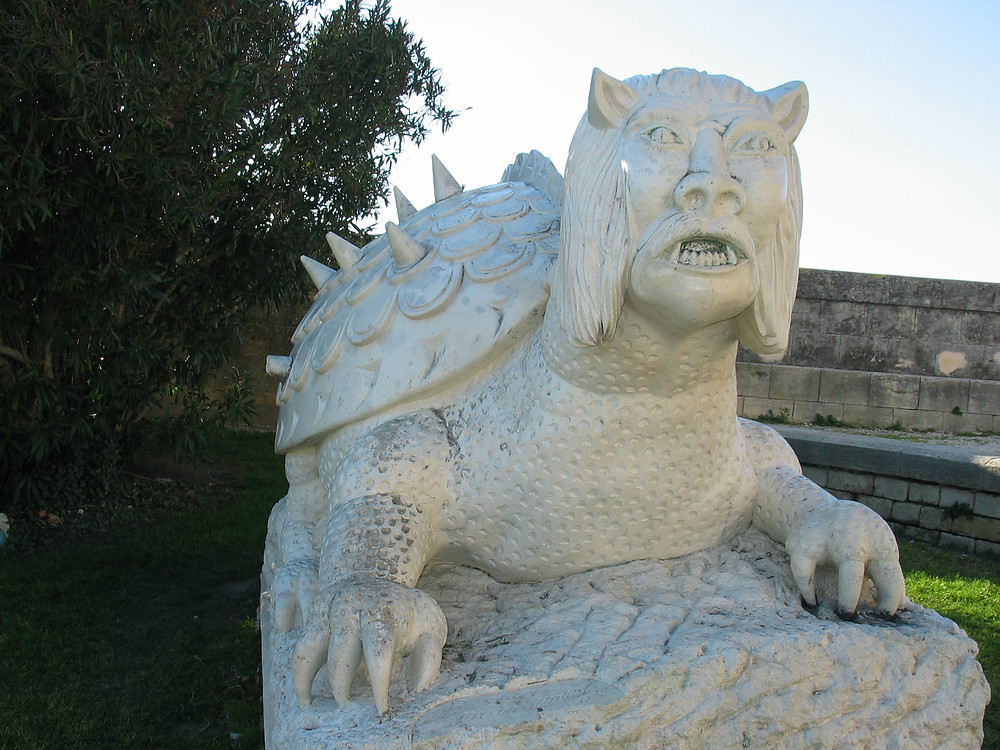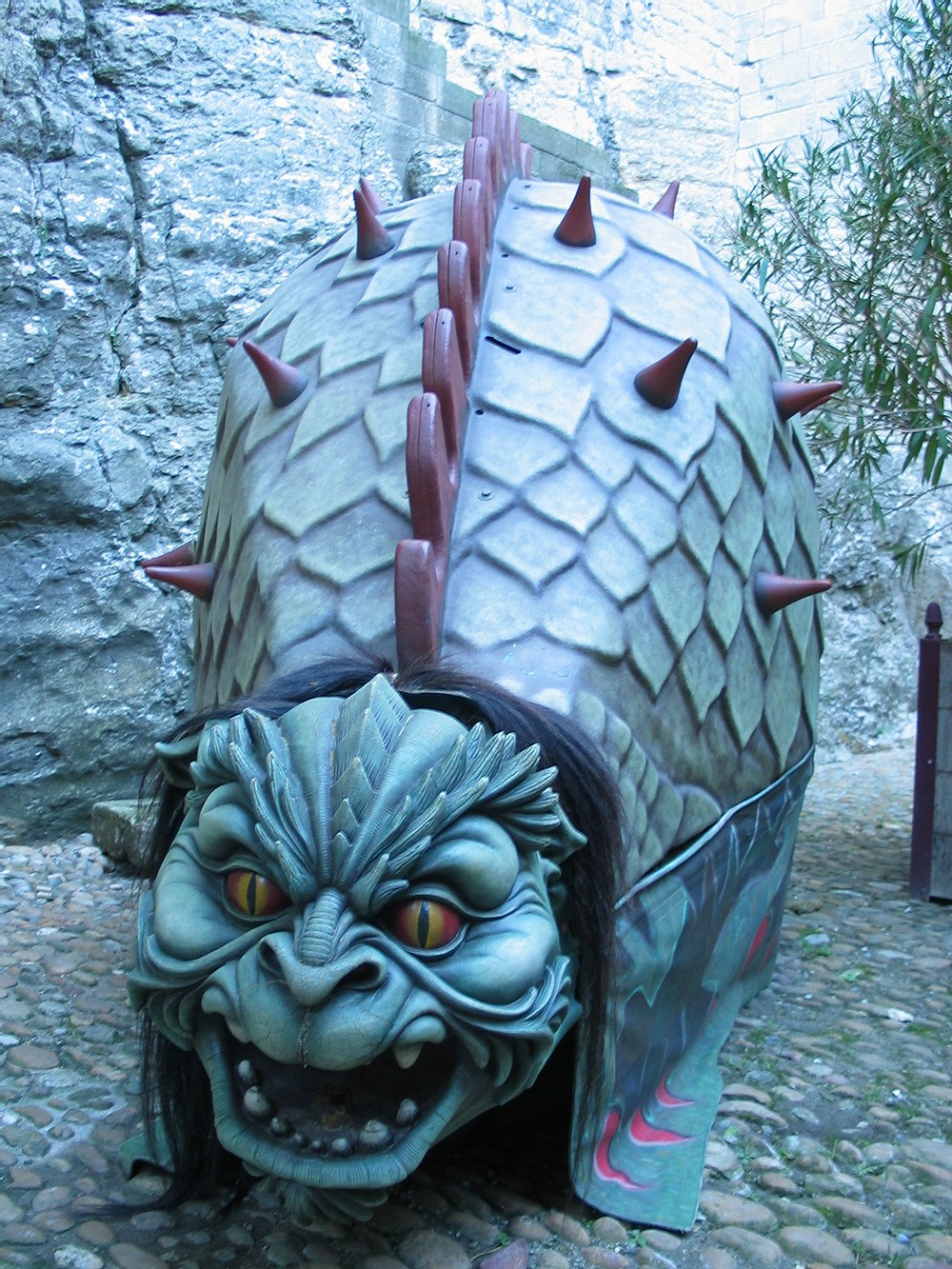
Known in France as Tarasque and in Spain as Tarasca, the Tarasconus is said to be the deadly offspring of the Leviathan.
According to medieval French Folklore, a chimerical-creature of draconic characteristics lived for centuries along the River Rhone.
This water loving dragon had similar habitats to those of modern amphibians, passing most of the time hunting and sleeping in the long stretch of forest between the cities of Arles and Avignon, most often seen where the city of Tarascon (named after the beast itself) stands today, but returning to the Rhone when was time to breed. During mating season, Tarasconus would swim in the river to lay its eggs in a subterranean cave, where they would be cared for by the Drac, another dragon of French folklore and recognized mate of Tarasconus.

Described as being larger than an ox, with six short legs ending in bear-like paws, it had the head of a lion, with a dark brown color mane, and it's belly was the only part of its body no covered with stone-hard scales. It had a long serpentine body ending in a long and flexible tail like that of a scorpion. On its back, Tarasconus carried a shell similar to that of a tortoise but with long sharp spikes.
This blood thirsty beast was most feared by its unbelievable savagery. Those who didn't perished when pierce by its tale would have little chance to survive the monster's sword-like teeth, which it also used to sink ships, eat cattle and destroyed anyone who tried to navigate the Rhone through its territory.
It was said that the Tarasconus arrived in Arles after swimming across the ocean from Asia. From the region of Galati to be precise, which was the place where the Leviatahn encountered the Onachus. Tarasconus being the result of this encounter, was left in Galati as an egg, but took to the ocean searching for a home moments after hatching.

Tarasconus desolated the region of the Bouches du Rhone for centuries until, according with Christian folklore, the people of Tarascon implored Saint Martha, who happened to passed by, to do something about the beast.
The saint set off into the woods, and came upon the beast in the act of devouring a man. Without a sword at hand, Saint Martha used holy water, splashing the beast with it to render its scaly-armor useless. Knowing itself defenseless, Taraconus surrender its will to the Saint, who lead the best back to town, where the people eventually killed it by throwing spears and rocks at its head and back.
Years later, the Major of Tarascon ordered the erection of a statue to commemorate the event.
Today, a yearly festival celebrates the final defeat of the Taraconus.
References
-Bane, T., 2016. Encyclopedia of Beasts and Monsters in Myth, Legend and Folklore. McFarland.
-Delmas, M-C. 2017. Dictionnaire de la France Merveilleuse. OMNIBUS.